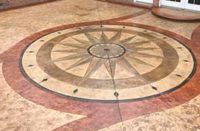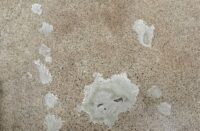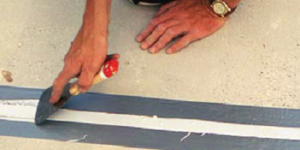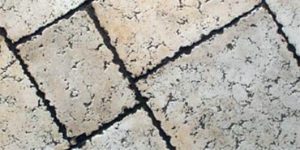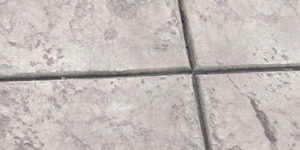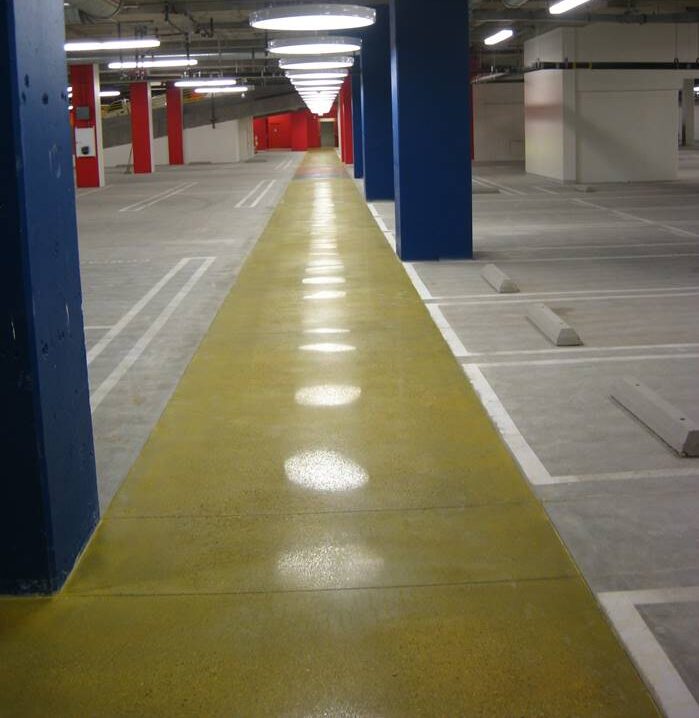
How come there are so many different types of joints in a concrete slab?
First let’s establish what the purpose of a “joint” is in concrete construction. They:
- Allow a concrete piece to move separately from other pieces or parts of the building.
- Let concrete shrink as it dries relieving most of the internal tension.
- Help control random cracking.
- Are used as a stopping and starting point.
- Create a weak point in a slab. This regulates where the cracks happen.
Here’s the tip
There are four main types of joints and many names for them.
Control/contraction joints.
As seen in the foreground of the picture above, control joints should be spaced (in feet) no more than two to three times the slab thickness (in inches). For example, a 4-inch slab should have joints that are 8-12 feet apart. Cut these joints deep enough, about 25% of the depth of the slab. Saw cut them as soon as the concrete can support the contractor’s weight. Always cut the same day the concrete is placed. This is called a soft cut.
Control/contraction joints are the joints with which concrete polishers interface the most. They are the ones you get paid to recut/clean-out, refill, or fill and shave flush with the floor.
Isolation/expansion joints
These joints where the wall meets the floor accommodate horizontal movement without damaging vertical structures such as columns and walls. These are formed before the concrete is poured.
Isolation joints are the ones by most columns that you’re grinding and edging around. They are wider and also often filled with an asphaltic type material. Many times, the two pieces of concrete aren’t on the same level and certainly don’t look or polish up the same. (This isn’t your fault.)
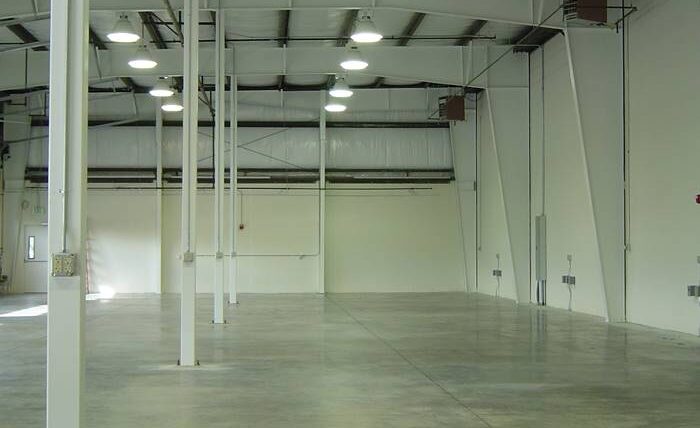
Cold joints
A cold joint is a plane of weakness in concrete caused by an interruption or delay in the concreting operations.
These unplanned joints have no pattern.
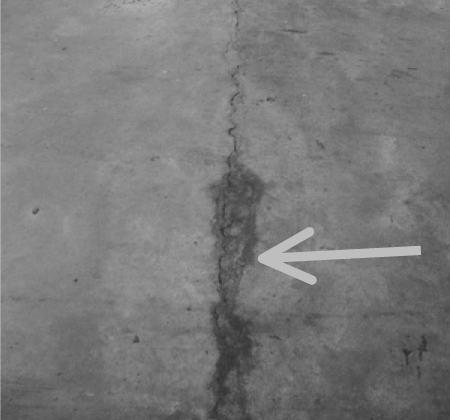
Construction joints
From front to back, these joints are formed using some sort of bulkhead made of wood, steel, plastic or precast concrete. These bulkheads are often used as screed rails during placing and finishing the slab. Construction joints should be worked into the overall joint plan, where they can also function as contraction joints. They are formed before the concrete is poured.
Finally, construction joints are simply where one pour stops and another one starts. Unlike when a floor covering is installed, these joints stay visible on a polished concrete floor.
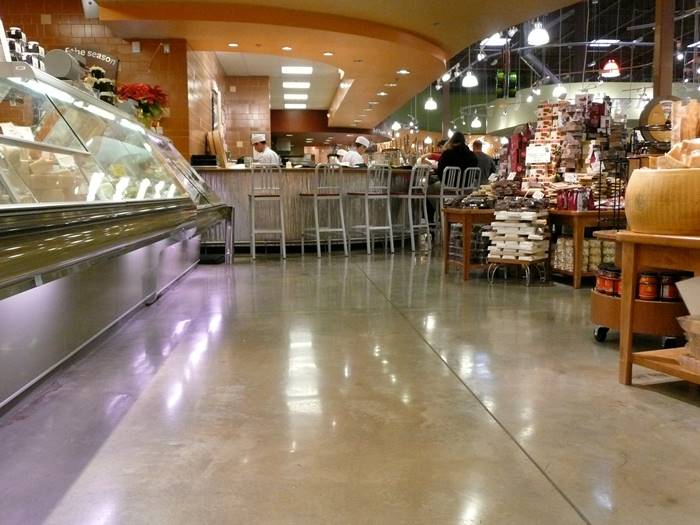
In the eyes of the owners and many times the GC, your company should perform miracles. Where joints are concerned, they’ll hold your feet to the fire.
But remember, you’re the floor expert. When asked, you can explain what type of joint they’re looking at and why it looks like it does. Knowledge can make the difference between rework and getting paid for extra work.

